Air Operations, Carolines - 10 of 48 XIII Bomber Command B-24s sent attack the Truk Atoll, but the rest turn back in the face of heavy weather.
- During the night, VII Bomber Command B-24s attack Ponape Island.
[  | |   ] ]
Air Operations, CBI
BURMA
- 11 7th Heavy Bomb Group B-24s attack Kalemyo and Wuntho.
- 9 10th Air Force B-25s attack a bridge at Thityabin and the rail line between Shwebo and Wuntho.
- Several 10th Air Force P-51s attack Lachigahtawng.
- 10 14th Air Force B-25s attack Lashio and other targets on the Salween River front.
CHINA
- 3 341st Medium Bomb Group B-25s and 15 14th Air Force fighter-bombers attack Japanese Army tanks at Taying, locomotives at Linfen, and rail facilities at Chenghsien.
- B-25s and P-40s attack a schooner off Nampang Island and sampans at Ft. Bayard.
FRENCH INDOCHINA
- 2 14th Air Force P-40s attack a carbide plant at Na Duong with aerial rockets.
INDIA
- 10th Air Force B-25s airlift ammunition to Imphal.
[  | |   ] ]
Air Operations, Europe
RAF BOMBER COMMAND
Evening Ops:
- 337 aircraft attack railway targets at Achères, Juvisy, Massey Palaiseau and Versailles. Included in this total are 195 Halifaxes, 122 Lancasters and 20 Mosquitos.
- Bombing conditions are better than on the previous night. All targets are bombed accurately, and although no details are available, it is probable that fewer civilians are killed. The targets are more distant from the battle front than those previously attacked and the German night-fighters have more time to intercept.
- 17 Lancasters and 11 Halifaxes are lost.
- 112 Lancasters and 10 Mosquitos of Nos. 1, 5 and 8 Groups carry out an accurate attack on an important 6-way road junction half-way between Bayeaux and St Lô at Forêt De Cerisy. The surrounding woods are believed to contain fuel dumps and German tank units preparing to counterattack the Allied landing forces. The nearest French village is several miles away.
Other Ops:
- 32 Mosquitos are sent to Cologne, 22 Halifaxes and 3 Stirlings lay mines off Lorient and Brest, 24 aircraft are on Resistance operations, and there are 18 Serrate and 18 Intruder patrols, and 10 RCM sorties.
US 8th AIR FORCE
FRANCE:
- During the morning, 172 8th Air Force B-17s attack tactical targets at three inland locations, and 229 8th Air Force B-24s attack tactical targets at four inland locations.
- During the afternoon, 835 8th Air Force B-17s attack the Kerlin/Bastard Airdrome and tactical targets in and around Nantes and Niort.
- Although their primary target is obscured by clouds, 91 8th Air Force B-24s attack the Laval Airdrome and tactical targets in and around Blain, Chateaubriant, Pouance, Tours, and Vitre.
- 1 B-17 and 1 B-24 are lost
- Throughout the day, VIII Fighter Command fighters provide 820 patrol and escort sorties and 653 strafing sorties.
-
- 14 USAAF fighters and 12 pilots are lost
- VIII and IX Fighter Command fighter and fighter-bomber pilots down 40 Luftwaffe fighters and 1 Ju-88 over France between 0511 and 2135 hours.
US 9th AIR FORCE
FRANCE:
- An American glider-infantry regiment towed from bases in England by IX Troop Carrier Command C-47s is landed beyond the beachhead. In all, more than 400 IX troop Carrier Command C-47s and C-53s take part in reinforcement and aerial resupply operations.
- Throughout the day, more than 600 9th Air Force sorties successfully attack bridges, trestles, marshalling yards, rail and road junctions, and coastal-defense and field-artillery batteries in and around the Normandy beachhead.
FRANCE:
US 15th AIR FORCE
ITALY:
- 12th Air Force B-25s and B-26s attack rail and road bridges and viaducts in north-central Italy.
- XII TAC fighter-bombers attack gun emplacements in the battle area and motor vehicles, troop concentratins, bridges, and rail cars north of Rome.
US 15th AIR FORCE
FRANCE:
- 15th Air Force heavy bombers attack the viaduct at Antheor and a bridge spanning the Var River.
ITALY:
- 15th Air Force B-24s attack a marshalling yard, the rail junctions at Savona, and the shipyard at Voltri.
- 52 15th Air Force P-38s bomb a viaduct.
[  | |   ] ]
Air Operations, New Guinea - V Bomber Command B-24s based at Nadzab undertake fruitless missions against a Japanese Navy convoy rumored to be in the western New Guinea area.
- B-25s attack numerous targets on Biak Island and supply dumps along the Orai River.
- A-20s attack shipping around Manokwari.
- A-20s and V Fighter Command fighter-bombers attack coastal targets between Hansa Bay and Wewak.
- US Army ground forces drive across the Mokmer airfield on Biak, but the airfield remains dominated by Japanese forces holding the high ground.
[  | |   ] ]
Atlantic - German light naval forces and U-boats commence frequent sorties, mainly at night, against the Allied invasion fleet, but suffer heavy losses including 2 destroyers, and sink only a small number of transports and landing craft and the destroyer RNN Svenner.
- US ships lost in the Normandy area after striking mines include: the minesweeper Tide (AM-125), the transport Susan B. Anthony (AP-72), tank landing craft LCT-458 and LCT-586.
[  | |   ] ]
Battle of the Atlantic Sunderland 'S' of No 201 Squadron RAF obtains a radar contact which is illuminated with flares. The U-boat (U-955) dives, but the aircraft begins baiting tactics hoping the U-boat will resurface. At 0300 a contact is reported which, when illuminated, proves to the the U-boat. 6 depth charges are dropped one of which seems to explode directly under the boat which then fades from the radar screen.
U-955|
| Class | Type VIIC |
| CO |
Oberleutnant zur See Hans Baden |
| Location |
Bay of Biscay |
| Cause |
Air attack |
| Casualties |
50 |
| Survivors |
None |
[  | |   ] ]
CBI
BURMA
In the NCAC area, the Chinese commanders call Gen Boatner's attention to the dangerously reduced strength of the Chinese forces in the Myitkyina area. Limited operations are continued there while preparations are being made to mount a fresh attack against Myitkyina on the 10th.
On the Salween front the Chinese 88th Division of the 71st Army reaches the East Gates of Lung-ling. The Chinese 87th Division, advancing along the Burma Road, is also approaching the town.
[  | |   ] ]
Italy Gen Alexander instructs Gen Leese, commander of the British 8th Army, to step up attacks in the direction of the Arezzo-Florence line while Gen Clark's American 5th Army is to proceed along the Tyrrhenian coast towards Pisa, Lucca nad Pistoia. The advance in both sectors is to be as fast as possible. The Americans take Bracciano and units of the 43rd Div occupy Civitavecchia. The docks there are sufficiently serviceable to be put into use immediately. In the evening Gen Clark withdraws Gen Keyes's American II Corps, the 85th and 88th Divs, from the front and sends in the French Expeditionary Corps. The South African 6th Arm Div takes Civita Castellana and pushes on up the road to Orvieto, and important road junction, followed by the 78th Div of the British XIII Corps. Other units of 8th Army enter Subiaco.[MORE]
[  | |   ] ]
New Guinea On Biak, the US 186th Infanry Regiment, with air and artillery support, on Biak capture the Mokmer airfield and reaches the south coast without opposition. Later the whole area is subjected to intense fire from Japanese artillery and machine guns. Supply of the 186th Infantry by sea is begun under fire. The 162nd Infantry Regiment begins to transfer the bulk of its forces by sea to the coastal sector south of Mokmer airfield so as to be able to attack the Japanese positions from the south and, after taking the southern positions, to eliminate the threat from the Japanese batteries to the supply lines between the island and the mainland. There is also fighting around the Ibdi pocket. American artillery begins to neutralize the enemy fortifications in caves in the eastern part of the island, east of Mokmer airfield.
In the Hollandia-Aitape area, the 2nd Battalion joins the 1st Battalion of the 158th Infantry, TF TORNADO, in the Tor River bridgehead. Both patrol uneventfully toward Maffin No. 1. In TF PERSUCUTION's sector, the Japanese become active about 1,300 yards west of Afua on the Afua-Palauru supply line. A gap in the outer defense line along the Driniumor, where regrouping is conducted. The 1st Battalion, 128th Infantry, replaces the 1st Battalion, 126th, in the northern part of the line.
[  | |   ] ]
Occupied Belgium King Leopold is deported to Germany.
[  ] ]
Pacific - The US submarine Gudgeon is reported as presumed lost in the Pacific Ocean area.
- The Japanese destroyer Hayanami is sunk by the US submarine Harder (SS-257) in the Celebes Sea.
[  | |   ] ]
Western Front Although the Allies have not reached the objectives set for the first day they are everywhere solidly established ashore. The priority is obviously to link up the 4 beachheads (Gold and Juno are joined already) and to expand inland to create room for the reinforcements now beginning to arrive. The Utah force, VII Corps, tries to link up with the scattered paratroop contingents and to advance toward Carentan and Montebourg. The V Corps from Omaha makes a general advance hoping to reach Isigny and Bayeaux. They get as far as attacking Formigny. From Gold the British 50th Inf Div takes Bayeux and other units cut the Caen-Bayeux road. Already the pattern for the battle is being established for the weeks to come.
For the Germans it is a matter of life or death to drive their enemies back before they can widen the breach they have mad in the coastal defenses. The German reserves are being drawn and held committed by the British advance toward and on either side of Caen. This gives the American at Omaha especially a welcome respite to consolidate and expand. This is the plan that the Allied Commanders and particularly Montgomery had hoped to work to.
Gen Eisenhower, visiting the front, orders the US V and VII Corps to converge as soon as the one has taken Isigny, assigned to the 29th Div, and the other Carentan, by the 101st Airborne. The 4th Div of the VII Corps advances north in the direction of the line Quineville-Montebourg, but is halted by firm German resistance on the line of fortifications from Crisbecq to Azeville. Meanwhile columns from the 8th Regt converge on Ste Mère Eglise to support the units of the 82nd Airborne Div against a dangerous German counterattack from the north. Other units from the 82nd Div reach the east bank of the Merderet River, but meet with violent opposition at the La Fière bridge. South of Ste Mère Eglise units of the 101st Airborne Div on the north bank of the Douve River hold up their attacks to establish a bridgehead across the water. The German detachments at Le Port and La Barquette surrender to them. The US V Corps, with the 29th Div on it right flank and the 1st Div on its left, advances toward Isigny and Bayeux.
Units of the 29th Div reach the St Laurent region and press on to the southwest toward Louvières and Montigny. On the right of the sector where the US 1st Div is in action elements of the 26th Regt fail to capture Formigny. In the center the 18th Regt pushes on toward Engranville, Manderville and Mosles. The 16th Regt, on the left, captures Huppain.
Ther Germans keep a solid grip on the narrow corridor dividing the British and American forces, along the Drôme River as far as its confluence with the Aure. In the evening troops of the US 2nd Div begin to come ashore.
In the British 2nd Army sector the 50th Div of the British XXX Corps takes Bayeux, which is miraculously taken intact, and some of its units press on southward toward Route 13, which links Bayeux and Caen. A similar operation is carried out further east, near Caen, by a brigade of the Canadian 3rd Div of the II Corps.[CAEN]
[  | |   ] ]
Images from June 7, 1944
Commandos Digging In
|
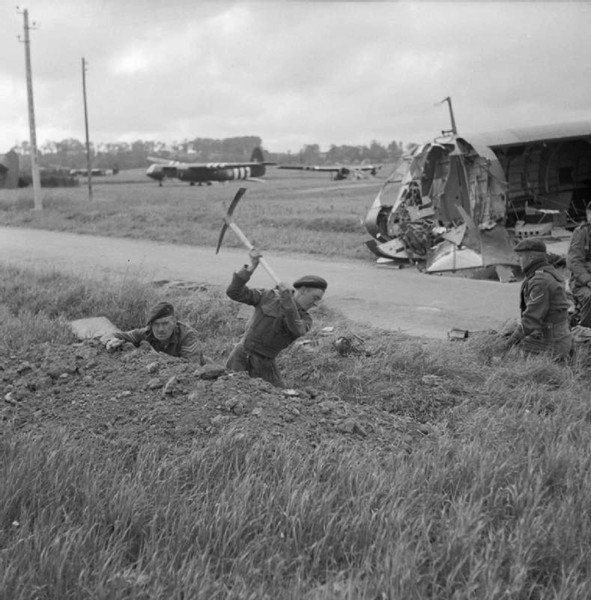 |
|
Directing Supporting Fire
|
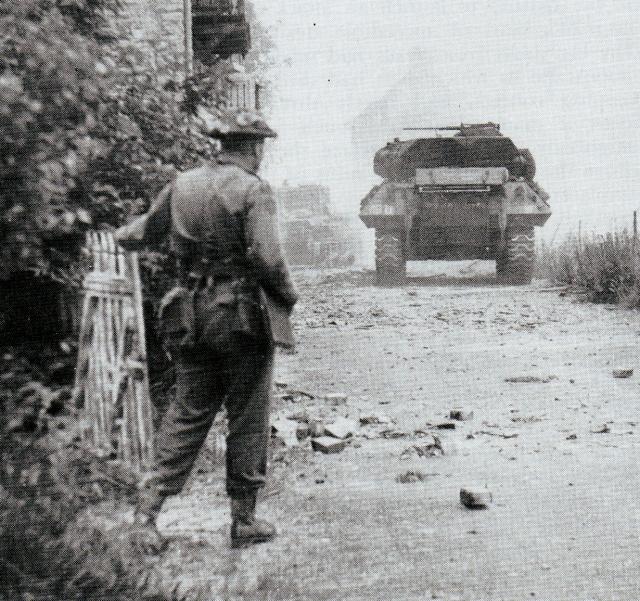 |
|
Armor on Normandy Beach
|
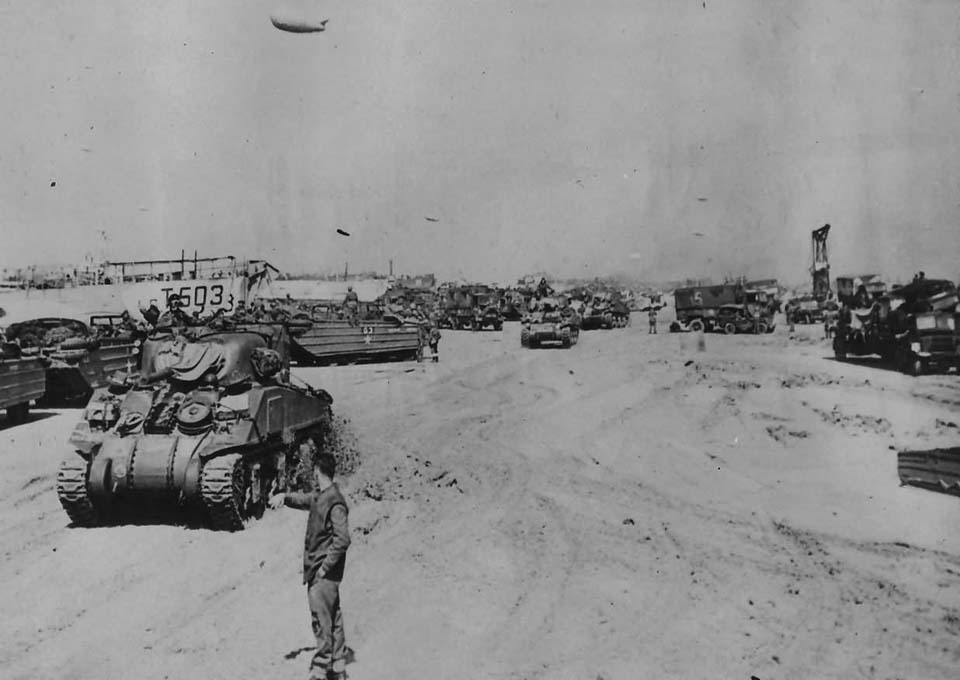 |
|
German POWs on a British Beach
|
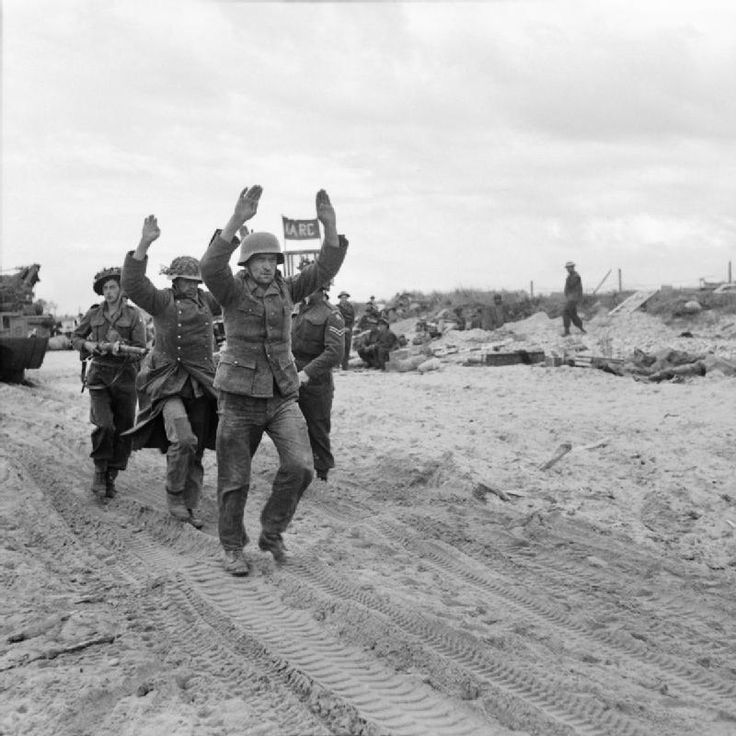 |
|
Resting Outside a Cafe
|
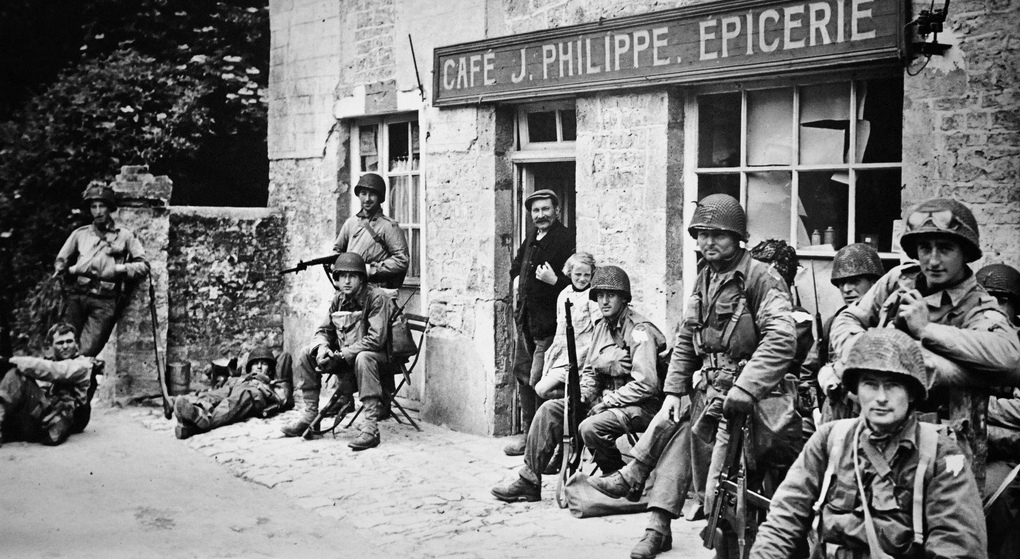 |
|
Moving to the Invasion Area
|
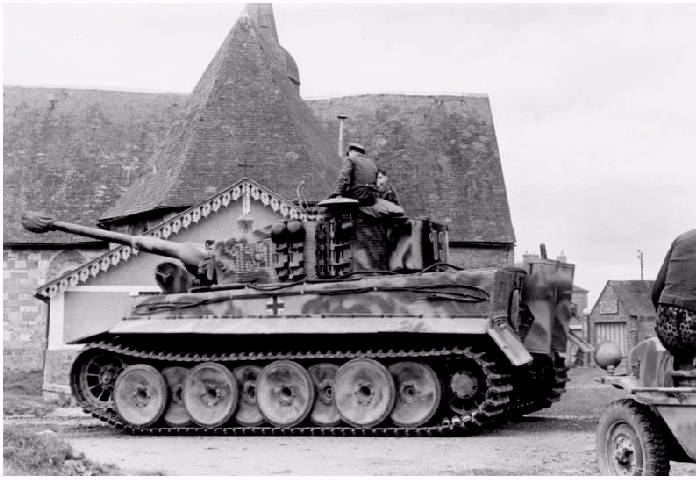 |
|
Moving onto a Beachhead
|
 |
|
On the Normandy Beaches
|
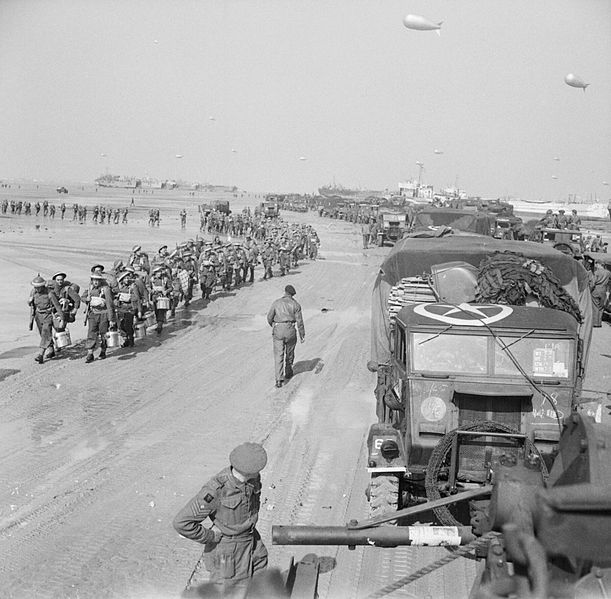 |
|
Crusader Tank Coming Ashore
|
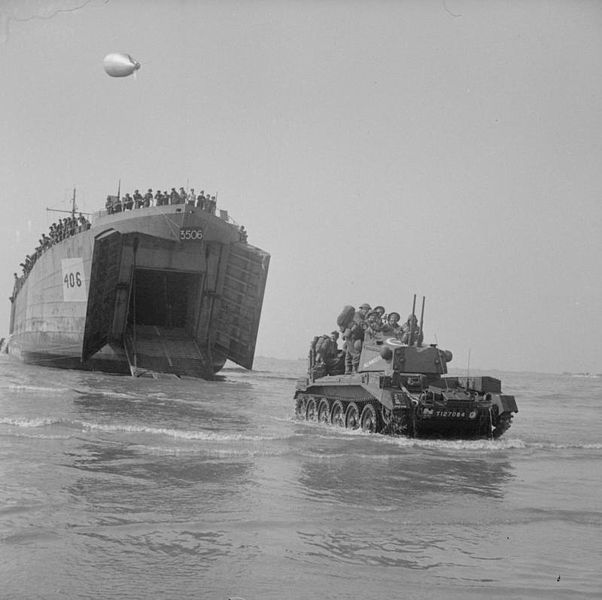 |
|
Landing Zone From Above
|
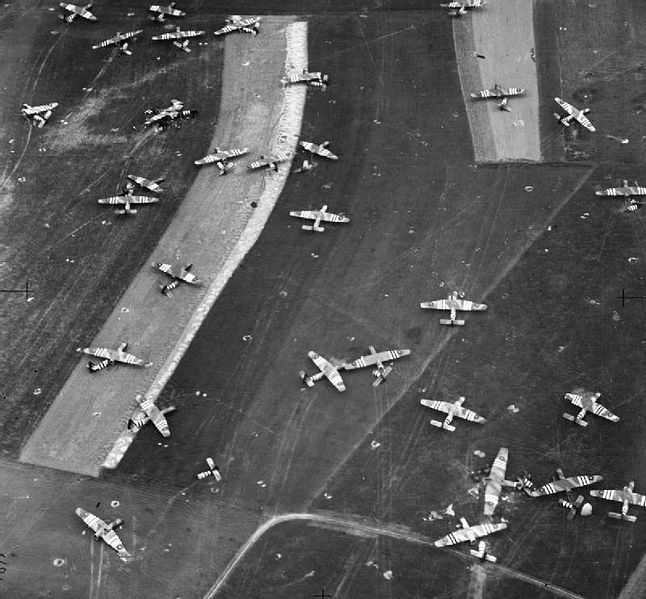 |
|
Follow-up Troops Wading Ashore
|
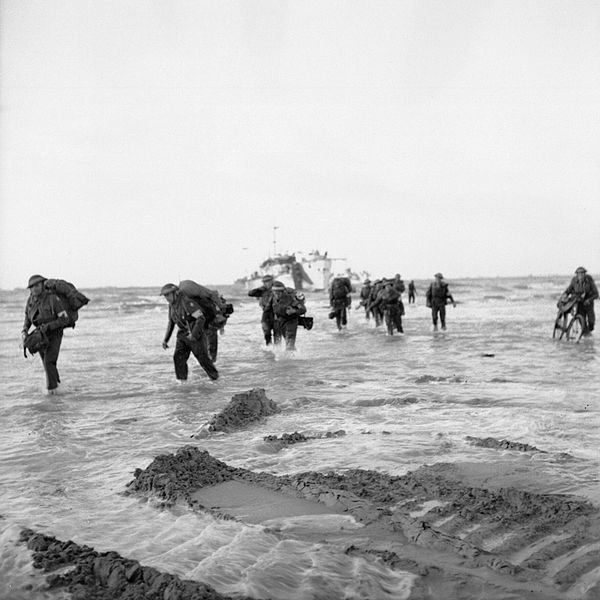 |
|
Armored Column on Gold Beach
|
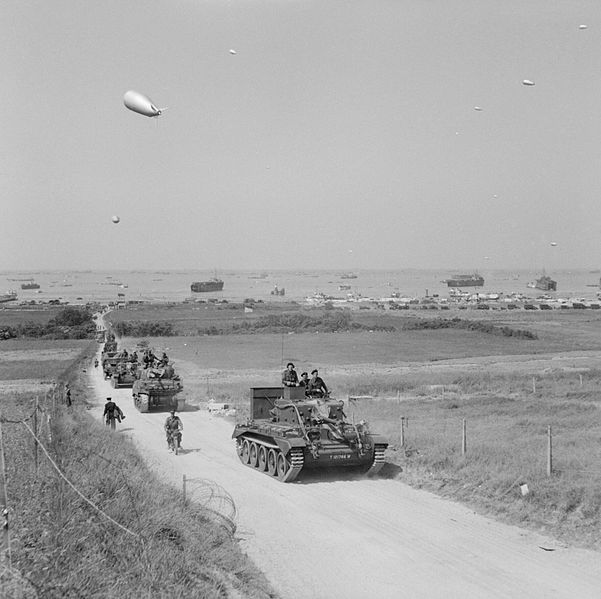 |
|
German Prisoners Lined Up Against a Wall
|
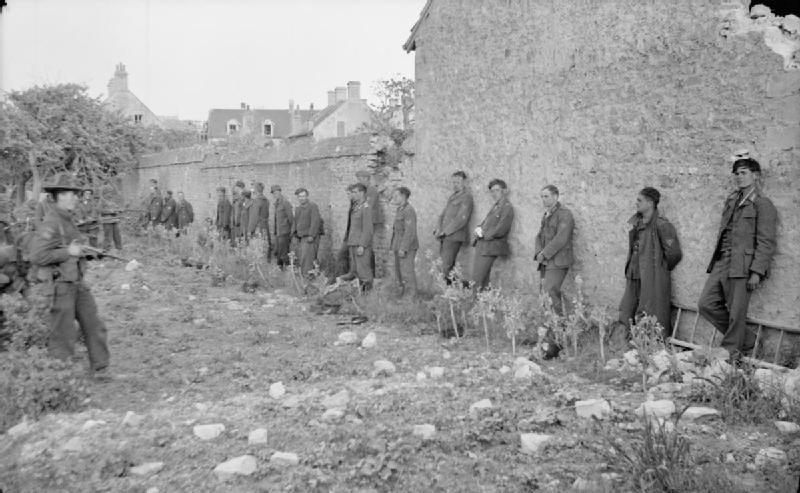 |
|
Omaha Beach, June 7, 1944
|
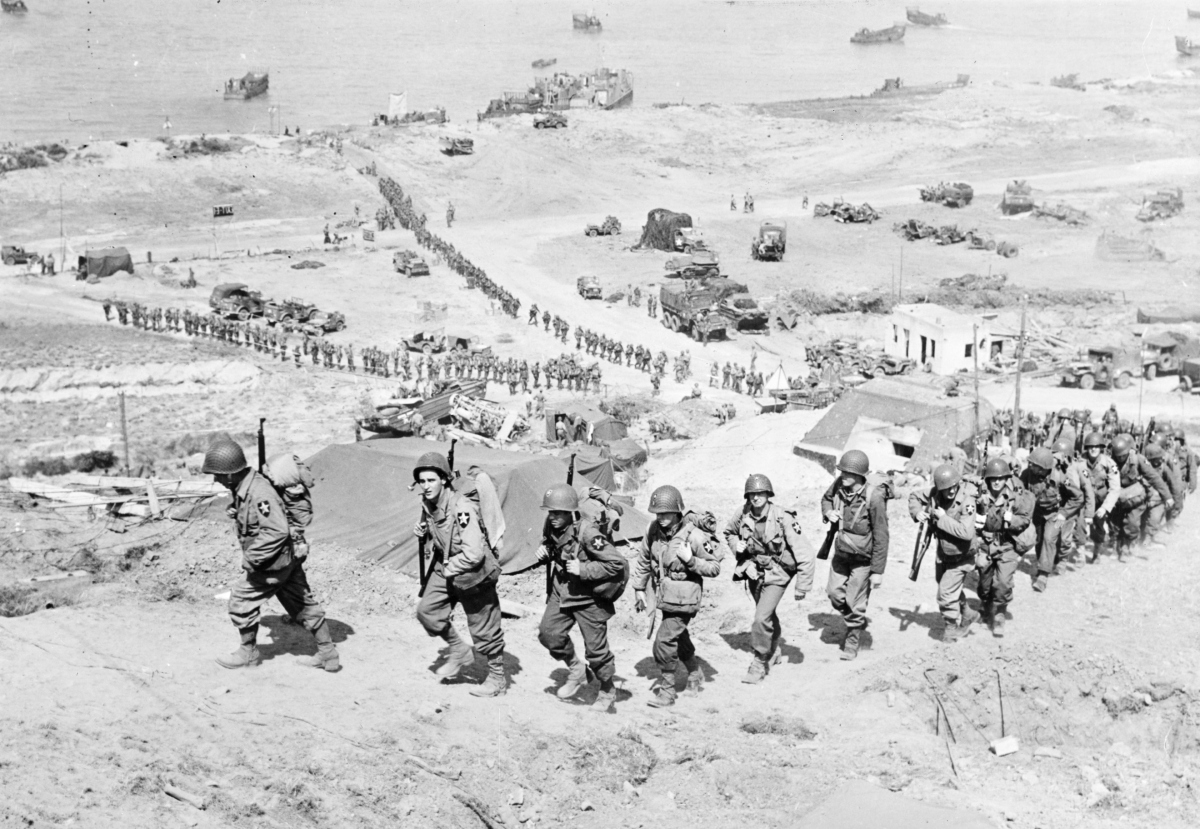 |
|
Half-track Wading Ashore
|
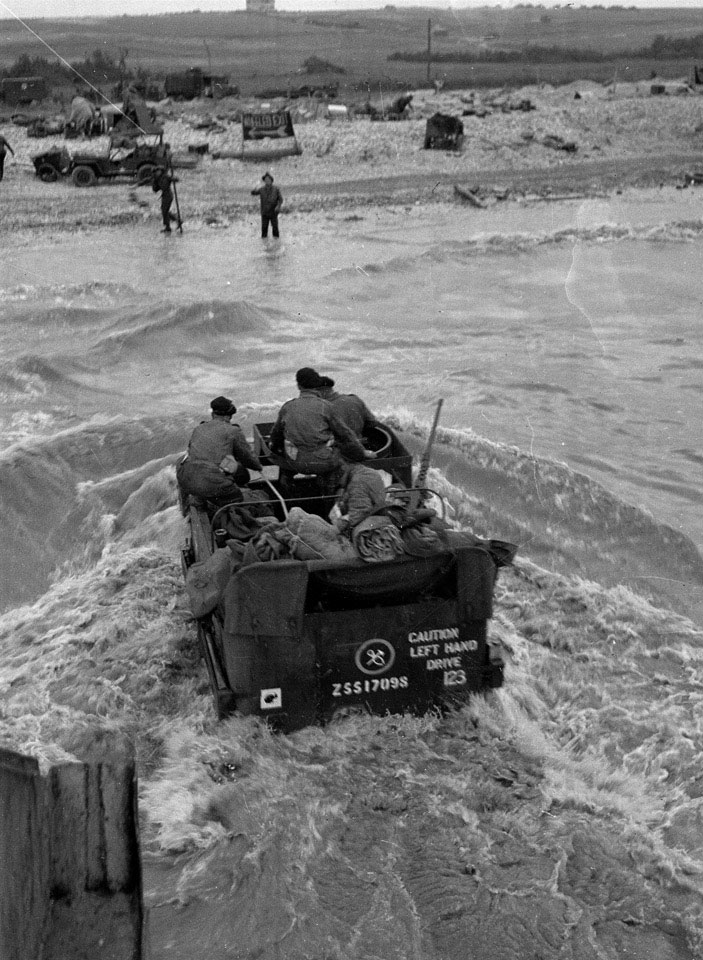 |
|
Troops Coming Ashore on a Normandy Beach
|
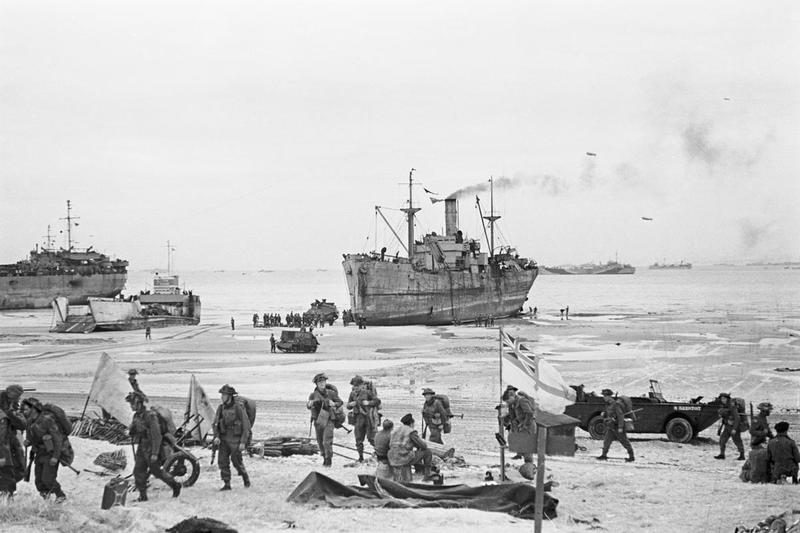 |
|
|















